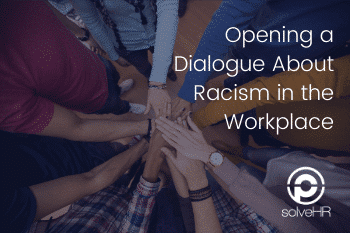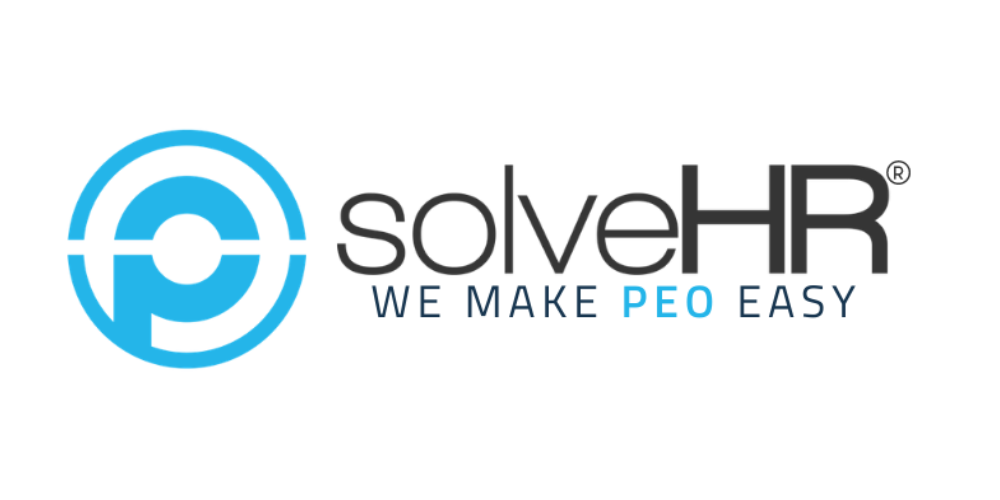- 06/24/2020
- Posted by: SolveHR-IT
- Categories: Culture & Retention, Training & Development

(This is a series of posts involving creating a more equal workplace. We hope to continue this series by expanding on topics such as discrimination, diversity, and gender in the workplace. Check out our other discussion on Sexual Harassment in the Workplace.)
Recent events in the United States have brought awareness, divide, concern, and other emotions about racism and discrimination in the country. Many large companies like Netflix, Bank of America, and even Ben and Jerry’s Ice cream have made public statements in support of the Black Lives Matter movement, signaling to the business world that it’s time we have an honest discussion about race in the workplace.
Yet, the worst thing that a company can do, big or small, would be to release a sanitized statement while taking no real action against the issue. That’s why this week we will be discussing how to start a dialogue with employees about concerns of discrimination and how to begin to take steps towards eliminating racism and discrimination entirely in the workplace.
Fostering Intentional Dialogue
Opening a dialogue on divisive issues like race and discrimination in the workplace can seem difficult but understanding if your business leadership is equipped to have these conversations in the first place is a big first step. At the bare minimum, you should at least make resources available for employees like grief counselors, accesses to therapy, diversity and inclusion resource groups, and employee assistance programs.
These types of discussions are important, but they are also an inadvertent way for leaders to handle things awkwardly. Take a case where LinkedIn attempted to hold a company-wide meeting on racial inequality. Some employees made some anonymous comments during the video call questioning the value of diversity in hiring, and minimizing the problem of police violence against Black Americans.
If you feel that your leadership isn’t equipped to handle a complex discussion on race and discrimination in the workplace then it’s ok to look for professionals who specialize in these types of discussion. Brushing up on the literature of racism in the workplace and training your leadership is an impactful way to foster a discussion.
Making clear to your customers, employees, and both on where you stand with the issues is also important to get the conversation going. Some employees might not be ready or willing to talk about how they feel in the workplace, but HR should be equipped to handle it if employees collectively say that discussion needs to happen about these issues.
Enacting Policies to Change the Workplace
National discussions on these issues shift the focus to other sectors of society, as demonstrated by large companies like Microsoft, Adidas, and Bon Appetit who were forced to evaluate their internal systems and cultures that perpetuated economic injustice and racial bias.
Paradoxically, American businesses that attempt to reap the benefits of a diverse, multicultural, and more inclusive workforce are undermined by the countervailing force of racism. We’ve seen this earlier in the article with our Microsoft and LinkedIn examples where although an open well-meaning forum is held for employees, not all employees agree with the doctrine of equality because of internalized racist stereotypes that some people have. Although the attempt means well, if not all of your employees are comfortable having the conversation then you risk alienating both sides of the discussion.
We’ve put together a list of concrete steps that you as a business owner can begin to eliminate internalized bias in your organization:
- Racial Bias Training Solutions- Specialized racial bias training like the one that Starbucks implemented after a PR crisis of their own are good ways to spread awareness among an organization of unconscious bias, foster empathy, and build social connections.
- Creating Safe Spaces for Difficult Conversations- We’ve talked about this one earlier, but people are often scared about talking about their own experiences with bias or discussing their own biases out of fear of saying something “wrong.” By encouraging a safe space for the conversation and allowing ways for employees to privately voice their concerns is a great way to indicate that their concerns are being listened to.
- Eliminating Bias- by systematically reviewing company systems and seeing where structural bias exists in your organization is a great way to eliminate it in the first place. This can be done by tweaking small systems and attempting to curb the effects of unconscious bias. This can be done in the hiring process, changing how to handle performance evaluations, how employees get compensated or promoted, or even how job descriptions are written.
- Knowing the Law- knowing existing laws help to understand what legal guidelines must be followed in the workplace. For example, Title VII of the Civil Rights Act prohibits racial discrimination in the workplace, and when an incident occurs HR is called in to evaluate the claim in a timely, fair, and impartial manner. By reviewing the law, you can effectively ensure that your employees are being protected to the full extent of the law.
Are you struggling with managing your human resource needs? SolveHR offers several transactional and strategic HR services to help your business. Contact us today to find the right solution for you, so you can focus on what matters—growing your business!
Subscribe to our blogs
Written by: Matthew Muriel
Meet Matthew! Matthew is our content writer and has been working with us for a year. He enjoys working for SolveHR because it allows him to practice his copywriting and allows him to build experience in his fledgling career. Matthew studied at the University of Texas at San Antonio and earned his degree in English with a concentration in Professional Writing. He values learning new processes in the HR industry and then conveying those ideas to the company’s clients. When he isn’t working, he enjoys reading nonfiction, with his favorite book that he recently read being The Gene by Siddhartha Mukherjee. If he could go anywhere in the world he would travel across the United States and visit all of the national parks.

